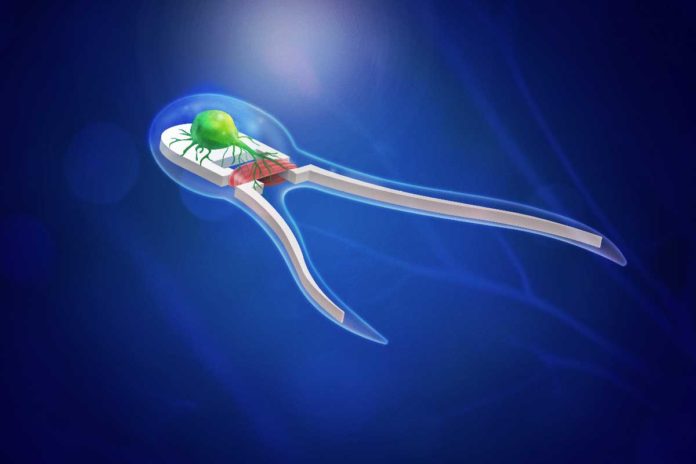The combination of muscle cells with soft robotics in recent years has prompted the improvement of biohybrid machines capable of untethered locomotion. A noteworthy frontier that at present remains unexplored is neuronal actuation and control of such muscle-powered biohybrid machines.
As a step forward toward this goal, scientists at the University of Illinois have demonstrated a new generation of two-tailed bots powered by skeletal muscle tissue stimulated by onboard motor neurons. The neurons have optogenetic properties: Upon exposure to light, the neurons will fire to actuate the muscles.
Mechanical science and engineering professor Taher Saif said, “We applied an optogenetic neuron cell culture, derived from mouse stem cells, adjacent to the muscle tissue. The neurons advanced towards the muscle and formed neuromuscular junctions, and the swimmer assembled on its own.”
“We used computational models to determine which physical attributes would lead to the fastest and most efficient swimming. For example, we looked at variations in the number of tails and tail lengths for the most efficient design of the biohybrid swimmer.”
Mechanical science and engineering professor Mattia Gazzola said, “Given the fact that biological actuators, or biobots, are not as mature as other technologies, they are unable to produce large forces. This makes their movement hard to control. It is essential to design the scaffold carefully the biobots grow around and interact with to make the most out of technology and achieve locomotive functions. The computer simulations we run play a critical role in this task as we can span several possible designs and select only the most promising ones for testing in real life.”
Saif added, “The ability to drive muscle activity with neurons paves the way for further integration of neural units within biohybrid systems. Given our understanding of neural control in animals, it may be possible to move forward with biohybrid neuromuscular design by using a hierarchical organization of neural networks.”
“We envision this advance leading to the development of multicellular engineered living systems with the ability to respond intelligently to environmental cues for applications in bioengineering, medicine, and self-healing materials technologies.”
“Just like twins are not truly identical, two machines designed to perform the same function will not be the same,” Saif said. “One may move faster or heal from damage differently from the other – a unique attribute of living machines.”
The National Science Foundation Science and Technology Center – Emergent Behavior for Integrated Cellular Systems and NSF’s Emergent Frontiers in Research and Innovation grant supported this research.
The paper is presented in the journal PNAS.
